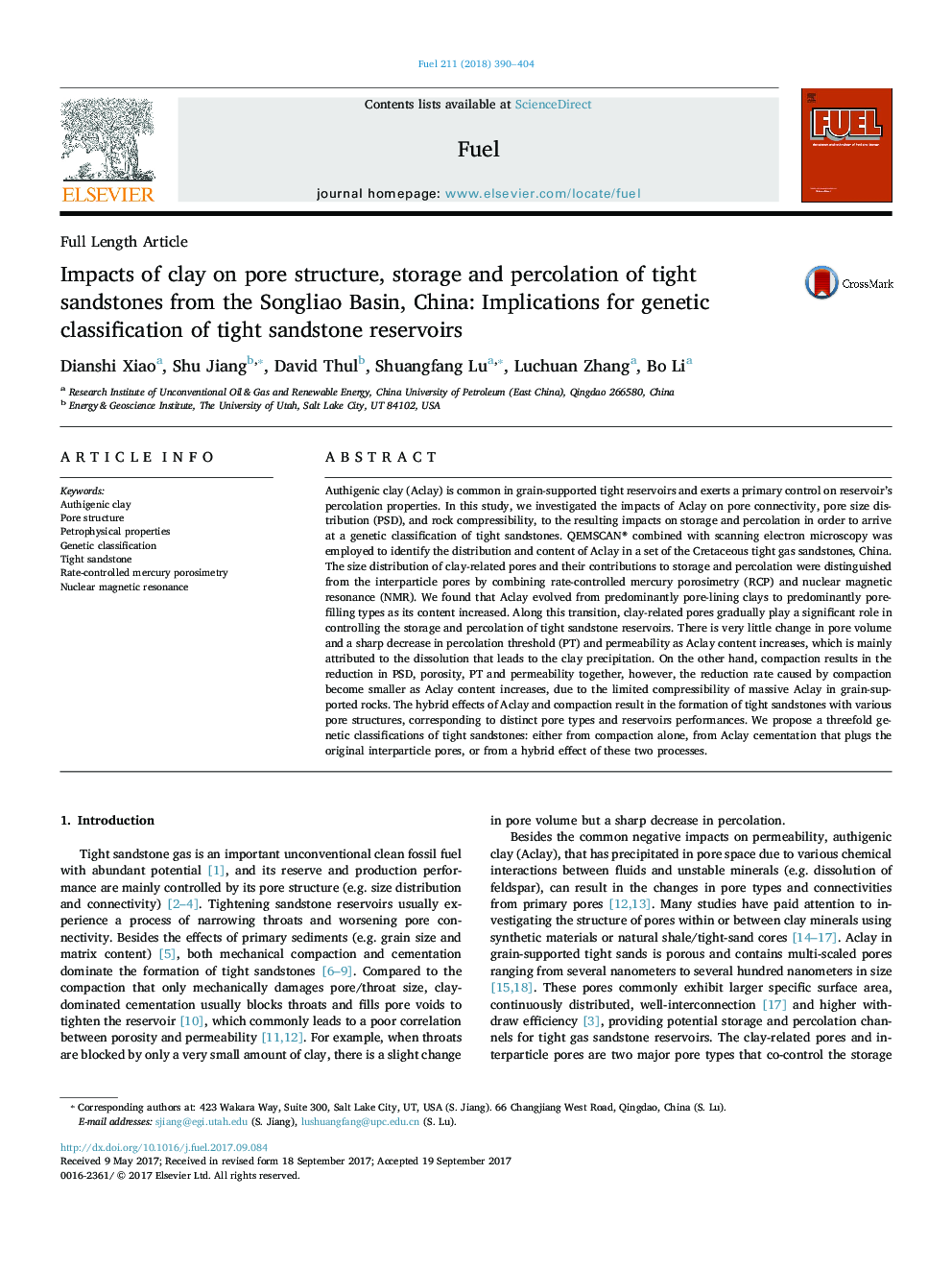| کد مقاله | کد نشریه | سال انتشار | مقاله انگلیسی | نسخه تمام متن |
|---|---|---|---|---|
| 6473490 | 1424953 | 2018 | 15 صفحه PDF | دانلود رایگان |

Authigenic clay (Aclay) is common in grain-supported tight reservoirs and exerts a primary control on reservoir's percolation properties. In this study, we investigated the impacts of Aclay on pore connectivity, pore size distribution (PSD), and rock compressibility, to the resulting impacts on storage and percolation in order to arrive at a genetic classification of tight sandstones. QEMSCAN® combined with scanning electron microscopy was employed to identify the distribution and content of Aclay in a set of the Cretaceous tight gas sandstones, China. The size distribution of clay-related pores and their contributions to storage and percolation were distinguished from the interparticle pores by combining rate-controlled mercury porosimetry (RCP) and nuclear magnetic resonance (NMR). We found that Aclay evolved from predominantly pore-lining clays to predominantly pore-filling types as its content increased. Along this transition, clay-related pores gradually play a significant role in controlling the storage and percolation of tight sandstone reservoirs. There is very little change in pore volume and a sharp decrease in percolation threshold (PT) and permeability as Aclay content increases, which is mainly attributed to the dissolution that leads to the clay precipitation. On the other hand, compaction results in the reduction in PSD, porosity, PT and permeability together, however, the reduction rate caused by compaction become smaller as Aclay content increases, due to the limited compressibility of massive Aclay in grain-supported rocks. The hybrid effects of Aclay and compaction result in the formation of tight sandstones with various pore structures, corresponding to distinct pore types and reservoirs performances. We propose a threefold genetic classifications of tight sandstones: either from compaction alone, from Aclay cementation that plugs the original interparticle pores, or from a hybrid effect of these two processes.
Journal: Fuel - Volume 211, 1 January 2018, Pages 390-404